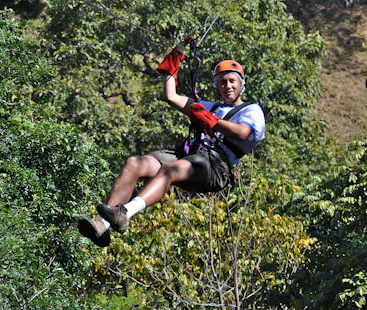Aerial Sports in Antigua and Barbuda: Top Outdoor Adventures Awaiting You
4.80
(15 reviews)
Discover the stunning scenery and incredible landscapes of Antigua and Barbuda from above!
Situated on the northeastern end of the Lesser Antilles in the Caribbean Sea, Antigua and Barbuda is home to plenty of great aerial sports activities. From paragliding to ziplining come and explore the diverse set of islands from the air! Compare and book a certified guide for your trip on Explore-Share.com: 1500+ guides, 70+ countries and more than 8000 different programs to choose from. Take a pick from our selection of Aerial Sports trips in Antigua and Barbuda. The mountains are calling!
Top aerial sports trips | Antigua and Barbuda
FAQs: Aerial Sports in Antigua and Barbuda
What should I know about Aerial Sports Antigua and Barbuda?
Antigua and Barbuda is composed of two islands in the northeastern end of the Lesser Antilles. Antigua is the larger of the two islands and sits about 50 kilometers to the south of Barbuda.
While both islands offer plenty of great spots for a variety of aerial sports, many trips take place on Antigua, where the international airport and capital are located. Along with ziplining, paralpinism is popular here.
Depending on weather conditions, it is possible to climb Boggy Peak, the highest point in the country, and soar back down over the forest and to Turners or Darkwood beach. Visiting in the evening is a great way to see the sunset over the Caribbean.
Meanwhile, Barbuda the much flatter Barbuda is a great place to head out on a parasailing or windsurfing adventure.
Why should I choose Antigua and Barbuda for my Aerial Sports adventure?
Stunning scenery
Boasting rugged volcanic terrain, pristine beaches and verdant tropical rainforests, Antigua and Barbuda is home to plenty of incredible scenery. Heading on any number of aerial sports trips is a great way to get a different perspective on the islands’ stunning landscapes.
Try out ziplining
Boasting thick tropical rainforests, Antigua is the perfect place to head for a thrilling zipline adventure. Climb along rope ladders through the trees and race from one end of the track to the next. Enjoy stunning views of the islands and get the chance to see some of the island’s native wildlife as you go.
Beautiful beaches
Antigua and Barbuda boast some of the most stunning beaches in the Caribbean. A unique way to see and experience them is to head out on an ocean parasailing adventure. Get your adrenaline pumping and jump from the hills, gliding back to earth over the pristine shoreline.
What can I expect from the weather in Antigua and Barbuda?
During the winter and spring, average daily temperatures in Antigua and Barbuda range from 25 °C to 30 °C (77 °F to 86 °F). From January to April, Antigua and Barbuda is mostly dry with low humidity.
How can I get to Antigua and Barbuda?
Any trip to Antigua and Barbuda begins with a flight into V. C. Bird International Airport (ANU), in St John’s on Antigua. Most guides will meet you here or in the capital, which is easily reached by bus from the airport.
Which language is predominantly spoken in Antigua and Barbuda?
English and Antiguan and Barbudan Creole
What’s the country code of Antigua and Barbuda?
+1
What currency is accepted in Antigua and Barbuda?
East Caribbean dollar (XCD)
What’s the high season for Aerial Sports in Antigua and Barbuda?
December to June
Join our newsletter!
Stay up-to-date on the best adventures.


